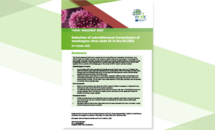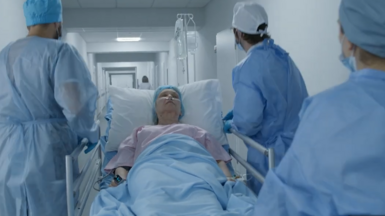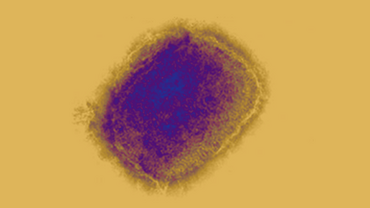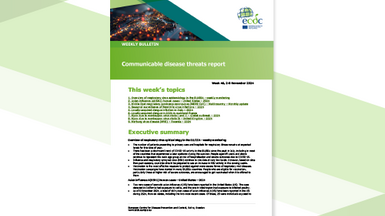Threat Assessment Brief: Detection of autochthonous transmission of monkeypox virus clade Ib in the EU/EEA
This Threat Assessment Brief aims to assess the risk of autochthonous transmission of monkeypox virus (MPXV) clade Ib in EU/EEA countries in the context of male-to-male sexual transmission. It is intended for public health authorities in EU/EEA countries and is based on currently available evidence. It therefore carries considerable uncertainty. Recommendations how public health authorities can respond at the country level together with an overview of knowledge gaps in the context of MPXV clade Ib are also included.
Epidemiological situation
- On 10 October 2025, Spain reported its first locally acquired clade Ib mpox case. On 17 October, four additional clade Ib mpox cases were reported to ECDC among males without travel history by Italy (two), Portugal (one) and the Netherlands (one). All five cases had mild symptoms. Some of the individuals reported having sexual contact with another male.
- These recent cases, where there is no travel history, represent a different pattern of transmission and indicate that transmission may be occurring in sexual networks among men who have sex with men in several EU/EEA countries. The 30 clade I mpox cases reported in the EU/EEA previously were all imported or had clear links to imported cases.
Risk assessment
- Based on current evidence, the overall risk of MPXV clade Ib infection is assessed as moderate for men who have sex with men and low for the general population.
- It is likely that further cases are present among men who have sex with men in the EU/EEA but have not yet been detected. ECDC will continue to closely monitor and review this risk assessment should the situation evolve into a larger outbreak.
Recommendations
- EU/EEA countries should ensure laboratory testing is easily accessible, particularly in locations that serve men who have sex with men, and that clinicians and laboratories can report cases to public health authorities rapidly.
- Identifying clades should be done where individuals have been diagnosed with mpox, and clade I viruses should be sequenced as soon as possible.
- Vaccination should be made available to all individuals at substantially higher risk of exposure to MPXV, in addition to other preventive measures. Public health professionals should advise individuals om groups at higher risk of infection to seek vaccination proactively.
- Contact tracing should be carried out after a case is identified, to enable control of onward transmission as well as to contribute data that will allow for an assessment of transmission dynamics.
- Public health authorities should continue risk communication activities around mpox and partner with civil society organisations that serve men who have sex with men to build trust in health services, provide advice on seeking medical assistance and improve vaccination coverage.
Download

More information
Factsheet for health professionals on mpox
Mpox (monkeypox) is a zoonotic viral disease caused by the Monkeypox virus (MPXV). The clinical presentation is similar to smallpox.
Risk communication and community engagement (RCCE) resources for mpox
ECDC has produced several documents that address RCCE and provide examples of ongoing RCCE activities in the EU/EEA countries, as well as tools for public health authorities.







